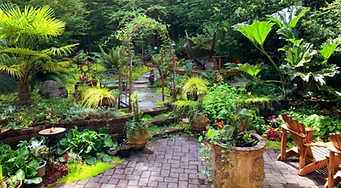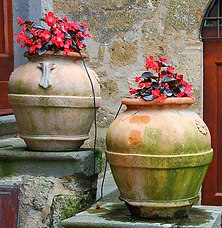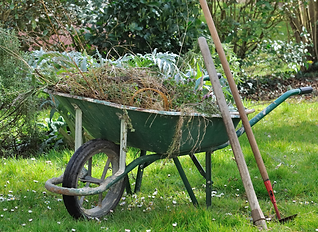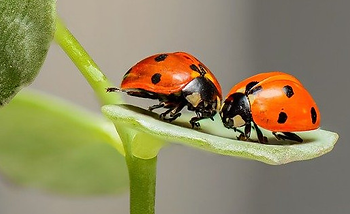
Mid-summer is a wonderful time of year to continue reaping benefits from your flower garden. However, most gardens begin to look a little dingy and spent by mid-July. The long growing season, sun, lack of water (or too much water) has taken a toll on your beautiful oasis. Here are some essential flower gardening tips to help recreate and rejuvenate your lovely garden in mid-summer.
(Some of the links within this post are affiliate links on which I receive a small compensation from the sale of certain items.)
Keep Humidity and Moisture Levels High
If you’re like me you like to travel a bit in the summer. However, when I am away from home, I always worry about how my plants will get properly watered. After all, you spent so much time in the spring creating these lovely gardens. Now you want to make sure they thrive when you’re away.
One way to keep your plants watered is by investing in a water irrigation system. There are many systems on the market so make sure you do your research and purchase one that is highly recommended, water saving, and easy to use.
If you choose not to purchase an irrigation system, here are a few tricks to keep your plants moist while you’re away.
- cluster your pots together so they touch
- add gravel into trays under your pots and fill the trays with water; the water will be sucked into the roots from the bottom and the evaporation of the water will help moisten the leaves
- collect your pots under the shade of a tree even if they are not shade loving plants; a week without direct sunlight will not harm their flowering power and the shade will help conserve water
- when planting flowers in pots choose large pots; they do not dry out as quickly as small pots

- in a flower garden, mulch up to 3 inches of organic mulch; avoid black mulches as they attract sunlight and can burn the roots of the plants. Mulch insulates the soil from heat, blocks weeds and helps conserve moisture.
Another suggestion is to hire a local student to water your plants while you’re gone. It is a good idea to supply them with tips for knowing when your plants need water. Do the finger trick: Stick your finger into the soil. If the soil sticks to your finger from moisture, it does not need watering. If the soil does not stick to your finger, the plant needs to be watered.
If a student is not available use the site Home Advisor and search plant watering services near you to find someone to help out. Remember to leave a list of your plants and how much water they’ll need.
There is a nifty device for checking the soil moisture called YITUOOW Soil Moisture Meter (from Amazon). It not only measures the soil moisture but tests the amount of light reaching the plant and the pH in the soil. This is a good tool to have on hand for any gardener. You can purchase it on Amazon.
(As an Amazon Associate I earn from qualifying purchases.)
Read my post How to Care For Indoor Plants, the section called Water System For Your Indoor Plants. A lot of these tips can also apply to outdoor gardens.
Morning Coffee Routine – Deadhead, Weed and Water
Deadhead
Many gardeners enjoy sipping a cup of coffee while inspecting their gardens. This is a perfect time to deadhead your flowers. Deadheading (removing spent flowers) not only removes eyesores from your garden but helps your flower use its energy to create extra blooms.

Weed
It’s also a good time to remove those unwanted weeds. If you remove a few every day it will not turn into a huge chore, which will happen if you delay removing the weeds for a couple weeks.
Water
Divide your yard into a couple of sections in your mind. Water one section with the hose one morning, water another section the next morning. It’s always best to water either in the early morning or after the sun sets. (If you choose the latter, instead of coffee, how about sipping a glass of wine?). And DO NOT get water on the leaves. This can promote mold and insect infestation. Water into the soil.
Other Suggestions To Promote a Healthy Summer Garden
Prune
Remove dead plants and any dead limbs from your garden flowers. Dead plants are not only unsightly but can harbor pests that can spread to other plants. Also, cut long, lanky vines at the nodes especially when there are around 2 inches between each leaf. Your plants will produce more leaves and look fuller than before. Do not be afraid to give them a haircut.
If you have chrysanthemums and/or Autumn joy (sedum stonecrop) in your garden, cut the stems back to 8 inches up until July 15. After this time, allow them to grow. This will ensure flowers for the Autumn season. It also prevents the stems of Autumn joy from growing too tall, therefore allowing them to stand straight and not droop.
Rid Flowers of Pests
At the first site of unwanted pests, you must kill them with a good organic spray. Be sure to purchase one that is kid and pet friendly, and one that will not harm ground water. Earth’s Alley Insect Control is a good choice.
====<Click Here For a Review On Earth’s Alley Insect Control>====
You do not want to kill all insects, in fact most are helpful. Invite some ladybugs, green lacewings and spiders (an arachnid) into your garden by planting tiny blossomed plants like alyssum, larger blossoms like queen Anne’s lace, or herbs such as lavender, mint or lemon balm. To read more on herbs in the garden, click Herb Garden.

Fertilize
Mid-summer is a good time to fertilize plants. This is the time most plants are in their high growth days. Use a good organic fertilizer that promotes flowers and growth. In addition to your annuals, perennials such as broad leafed evergreens like gardenias will benefit from fertilizer at this time.
Fertilize every 15 to 30 days depending on the type of flower you have. I like fertilizing annuals once every two weeks especially in the beginning of the season, but don’t forget to continue fertilizing throughout the growing season.
A Little Bit Of Care – A Whole Lot Of Benefits – Flower Gardening Tips
Enjoy your garden every step of the way by following these simple tips. Remember to water, deadhead, weed, remove dead flowers and stems, prune, remove unwanted insects and fertilize. If you follow these instructions, your garden will be lush and vibrant well into the fall.
I hope you enjoyed this post and learned a tip or two. Leave a comment below. I’d love to hear from you!
Happy Gardening!
Nina
bestgardeningforbeginners@gmail.com
